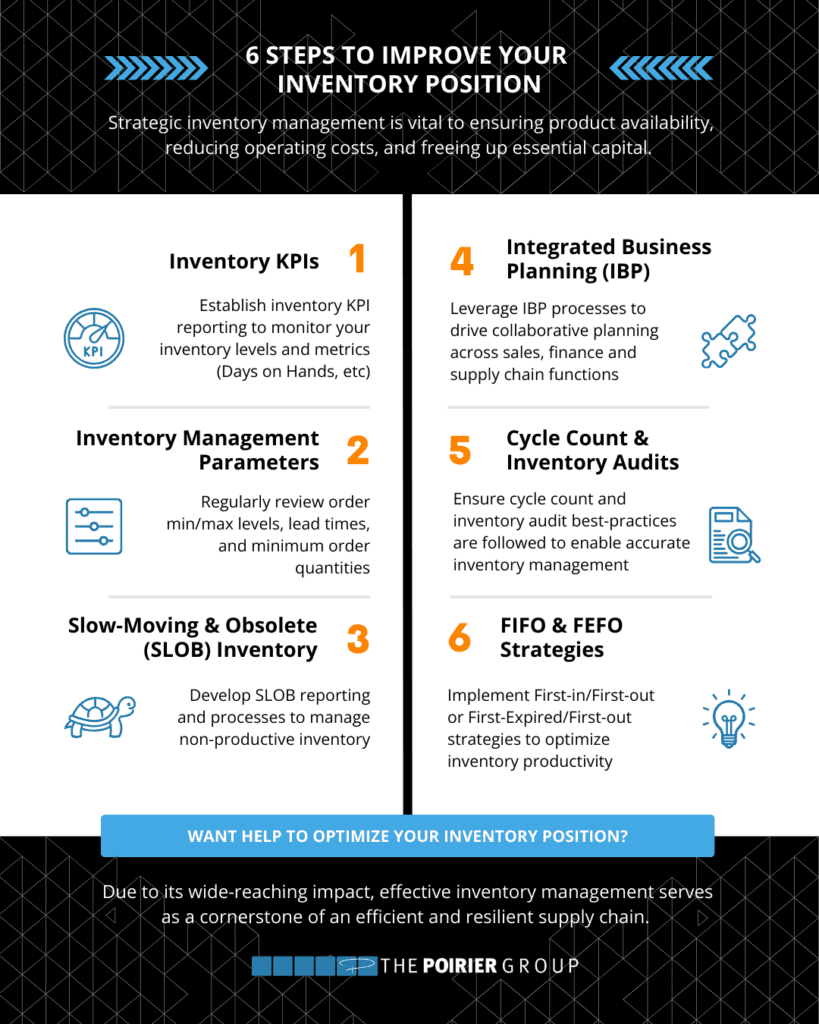
Strategic inventory management is vital to ensuring product availability, reducing operating costs, and freeing up essential capital. Due to its wide-reaching impact, effective and accurate inventory management serves as a cornerstone of an efficient and resilient supply chain. Here’s how to optimize your inventory position:
- Inventory KPIs: Establish inventory KPIs reporting to strategically monitor your inventory levels and metrics (Days on Hand, Inventory Costs, etc.)
- Inventory Management Parameters: Regularly review order min/max levels, lead times, and minimum order quantities
- Slow-Moving & Obsolete (SLOB) Inventory: Develop SLOB reporting and processes to manage non-productive inventory
- Integrated Business Planning (IBP): Leverage IBP processes to drive collaborative planning across sales, finance and supply chain functions
- Cycle Count & Inventory Audits: Ensure cycle count and inventory audit best practices are being used and followed to enable accurate inventory management
- FIFO & FEFO Strategies: Implement First-In, First-Out or First-Expired, First-Out strategies to optimize inventory productivity
At The Poirier Group, our significant experience and business consulting services span many industries. Our proven track record of delivering tangible and pragmatic sustainable results comes from a blend of analytical rigour and creative problem-solving, empowering our clients to unlock their full potential through supply chain management.
Learn more about our work in Supply Chain.
